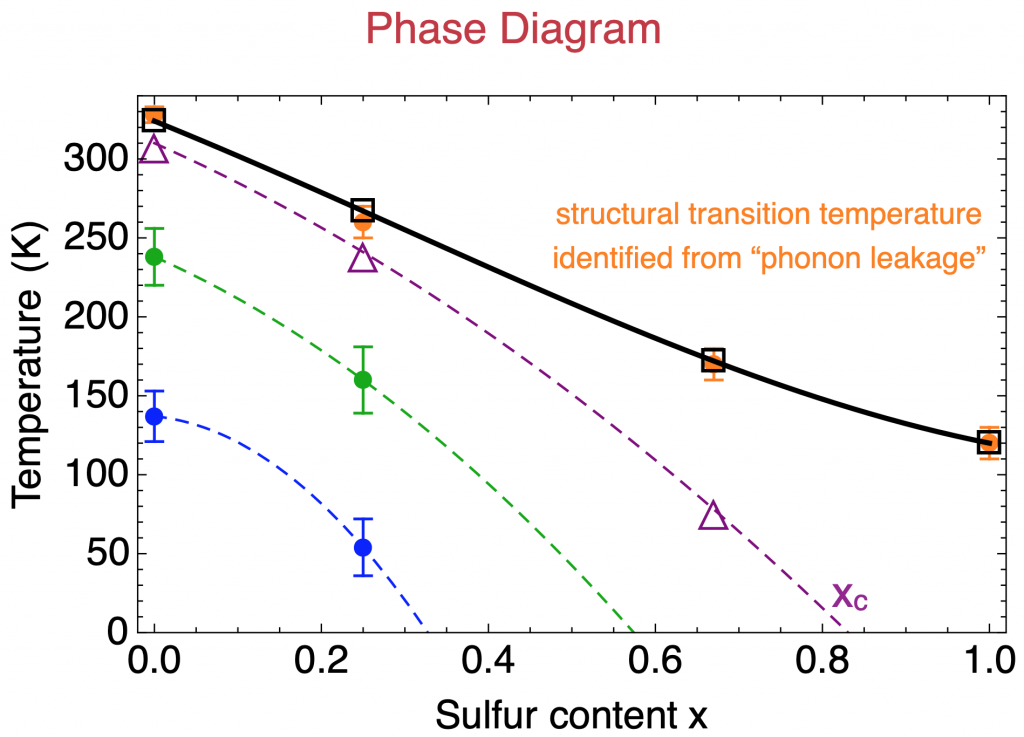Following our previous work on the excitonic soft mode and emergent coherence of Ta2NiSe5 (WebLink: npj Quantum Materials 6, 52 (2021) ArXiv Link: arXiv:2007.07344 PDF: File), we study the effect of sulfur doping on the excitonic ground state. The critical excitonic fluctuations diminish with the sulfur doping x, and eventually shift to high energies, which is characteristic of a quantum phase transition. However, a symmetry-breaking transition at finite temperatures is detected for all x, exposing a cooperating lattice instability that takes over for large x. Our study reveals a failed excitonic quantum phase transition, masked by a preemptive structural order.
The phase diagram below illustrates how the coupling to lattice modes enhances the transition temperature. The bare electronic transition temperature is represented by blue dots. The coupling to optical phonon modes of the same symmetry enhances the blue dots to the green ones. The coupling to noncritical acoustic phonon modes further enhances the green dots to purple triangles. Without ferroelastic instability, there would be a quantum phase transition at sulfur doping level xc. However, the ferroelasticity prevents the happening of such a quantum phase transition, and enhances the purple triangles to orange dots, which match the experimentally-determined transition temperature from the lattice structural change.
ArXiv Link: arXiv:2104.07032 PDF: File
